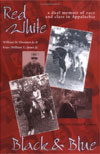Despite the gains achieved in civil rights since the 1960s, Americans remain very much at odds in their attitudes towards racially-directed policy, according to a new book, Still a House Divided: Race and Politics in Obama’s America. While few political actors challenge the central thrust of Martin Luther King’s vision, most notably that a man be judged by the content of his character rather than the color of his skin, the two major parties are deeply divided as to whether policymakers should be guided by a color-blind standard or one that is race conscious. Yale 1964’s William Bradford Reynolds championed  the color blind approach as Assistant Attorney General for Civil Rights during the Reagan Administration, much to the consternation of the civil rights establishment and much of the mainstream media. Today Reynolds’ approach has become the mainstream Republican position, while Democrats press for continued race-conscious actions, including affirmative action procedures for employment and admissions programs. Desmond King and Rogers Smith spell out the consequences of this policy divide in some detail, but their analysis does not touch on the ways we as Americans, often living in close proximity and with knowledge of one another, fail to see the world the same way because of our racial differences.
the color blind approach as Assistant Attorney General for Civil Rights during the Reagan Administration, much to the consternation of the civil rights establishment and much of the mainstream media. Today Reynolds’ approach has become the mainstream Republican position, while Democrats press for continued race-conscious actions, including affirmative action procedures for employment and admissions programs. Desmond King and Rogers Smith spell out the consequences of this policy divide in some detail, but their analysis does not touch on the ways we as Americans, often living in close proximity and with knowledge of one another, fail to see the world the same way because of our racial differences.
Reynolds’ classmate William Drennen has taken up the task of exploring this dilemma, co-authoring a joint memoir with Kojo (William T.) Jones, Red, White, Black & Blue. As part of a distinguished Charleston family, Drennen, who is white, got to know a number of African American kids growing up by playing ball in sandlots near his home. In 9th grade, some of these playmates, including Kojo Jones, became his classmates and teammates during the first year Thomas Jefferson Junior High School integrated. “It really came together on the football field,” Drennen later remarked, but within a year he was off to the all-white Episcopal  High School in Alexandria, Virginia, and soon afterwards to Yale, where the number of black students in his class could be counted on the fingers on his hands. Years later, serving as West Virginia’s Commissioner of Culture and History, Drennen was inspired by a lecture by fellow West Virginian and Harvard professor Henry Lewis Gates to approach Jones about writing a joint memoir about their experiences in Charleston. Edited with an additional section devoted to analyzing linguistic differences between the two men by Marshall University English professor Dolores Johnson, Red White Black & Blue stands as a brave attempt to bridge a substantial racial gap. Despite similar backgrounds, the two men see the world in very quite different terms. While Drennen echoes Reynolds’ desire to for a color-blind society, Jones rejects the premise by writing, “’Let’s be a color-blind society, the even-steven concept. Let’s all put down our arms and start a fight here on a level playing field, as if integration and affirmative action have already accomplished their goals.’ This is an argument designed to appease whites. It employs the Abraham Lincoln philosophy on the slavery issue…and I suspect even Bill Drennen subscribe[s] to this kind of even-steven concept. This is the fallacious, illogical reasoning that is being used in most government circles as a way to keep the black minority from achieving economic parity. Sure. And then give us another two hundred fifty years to catch up.”
High School in Alexandria, Virginia, and soon afterwards to Yale, where the number of black students in his class could be counted on the fingers on his hands. Years later, serving as West Virginia’s Commissioner of Culture and History, Drennen was inspired by a lecture by fellow West Virginian and Harvard professor Henry Lewis Gates to approach Jones about writing a joint memoir about their experiences in Charleston. Edited with an additional section devoted to analyzing linguistic differences between the two men by Marshall University English professor Dolores Johnson, Red White Black & Blue stands as a brave attempt to bridge a substantial racial gap. Despite similar backgrounds, the two men see the world in very quite different terms. While Drennen echoes Reynolds’ desire to for a color-blind society, Jones rejects the premise by writing, “’Let’s be a color-blind society, the even-steven concept. Let’s all put down our arms and start a fight here on a level playing field, as if integration and affirmative action have already accomplished their goals.’ This is an argument designed to appease whites. It employs the Abraham Lincoln philosophy on the slavery issue…and I suspect even Bill Drennen subscribe[s] to this kind of even-steven concept. This is the fallacious, illogical reasoning that is being used in most government circles as a way to keep the black minority from achieving economic parity. Sure. And then give us another two hundred fifty years to catch up.”
Drennen and Jones’s book can’t be reduced to the simple opposition mentioned here. It does, however, suggest the difficulties in conducting inter-racial dialogue even in the best of circumstances. With our two major parties unwilling or unable to bridge their own policy differences on race, change has to come from the ground up. This book suggests the challenges to that goal but also affirms its desirability.